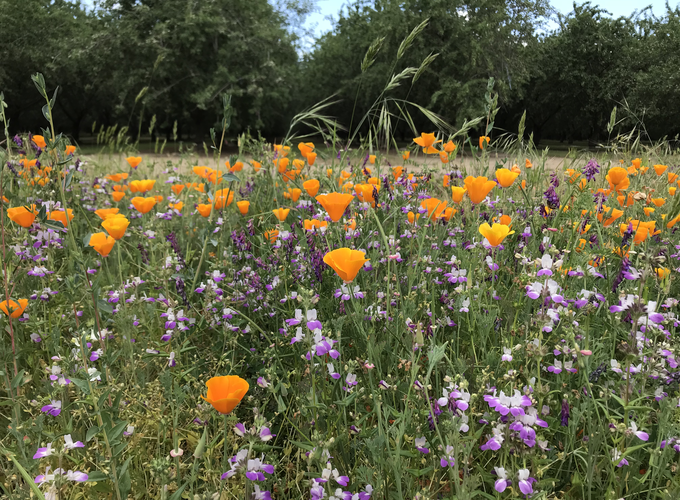Wildflower habitats planted along field borders are a widely promoted strategy for supporting bees in agricultural landscapes. However, honey bees (Apis mellifera), which are often stocked at high densities in crop lands, can compete with wild bees for pollen and nectar, potentially limiting the successfulness of wildflower plantings at supporting diverse bee communities. Using weekly samples of five study sites in Northern California we assessed how plants in pollinator-friendly seed mixes varied in their ability to provide bees with abundant and nutritious pollen under intense honey bee competition. We quantified how pollen production, protein and lipid content, and end-of-day pollen availability varied among plant species. We also sampled bee visits to flowers and quantified the composition of pollen on bee bodies. Using these data, we assess how the pollen resource landscape and increasing honey bee abundance impacted the pollen nutrition of wild bee diets.
 Figure by Maureen L. Page
Figure by Maureen L. Page